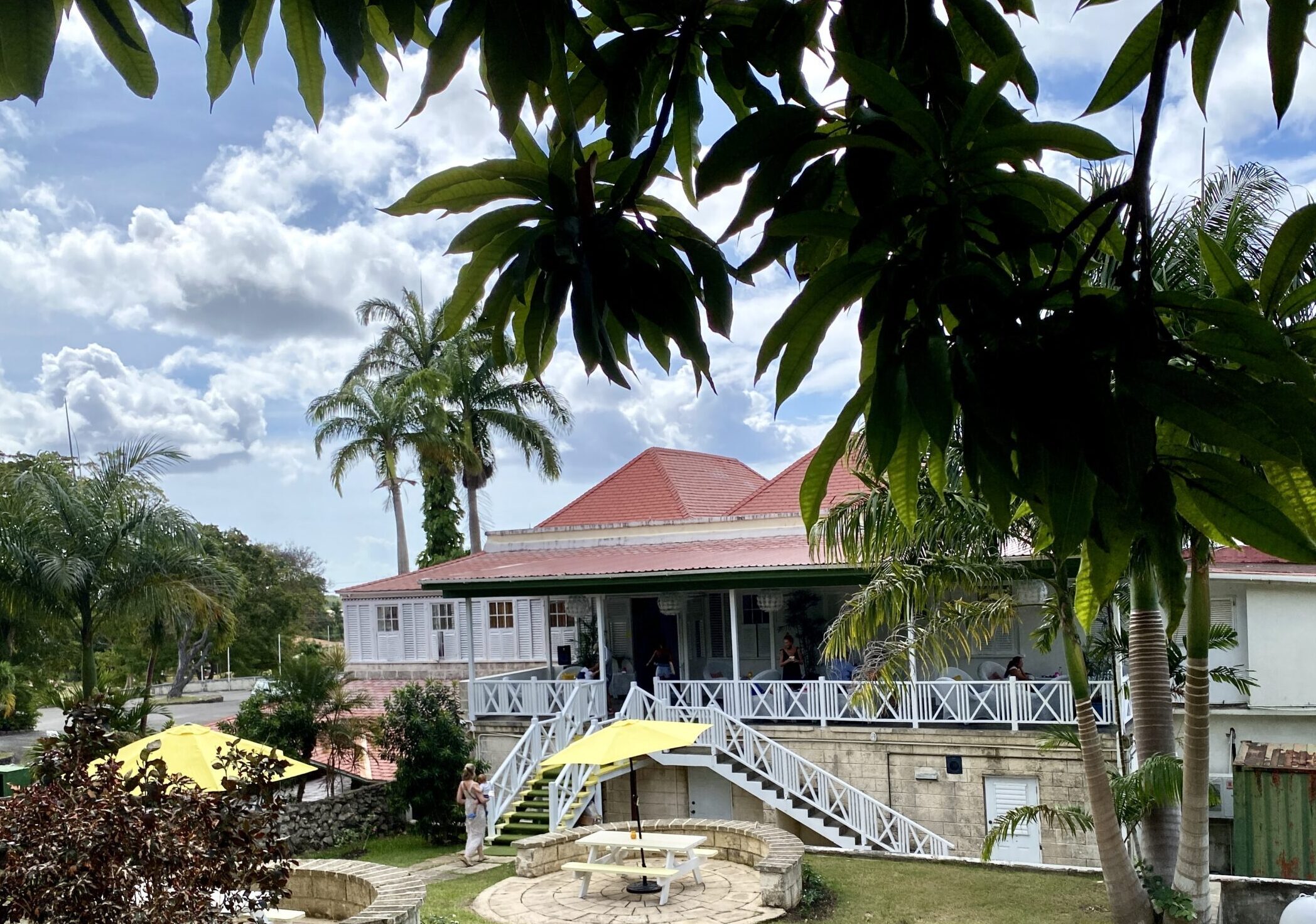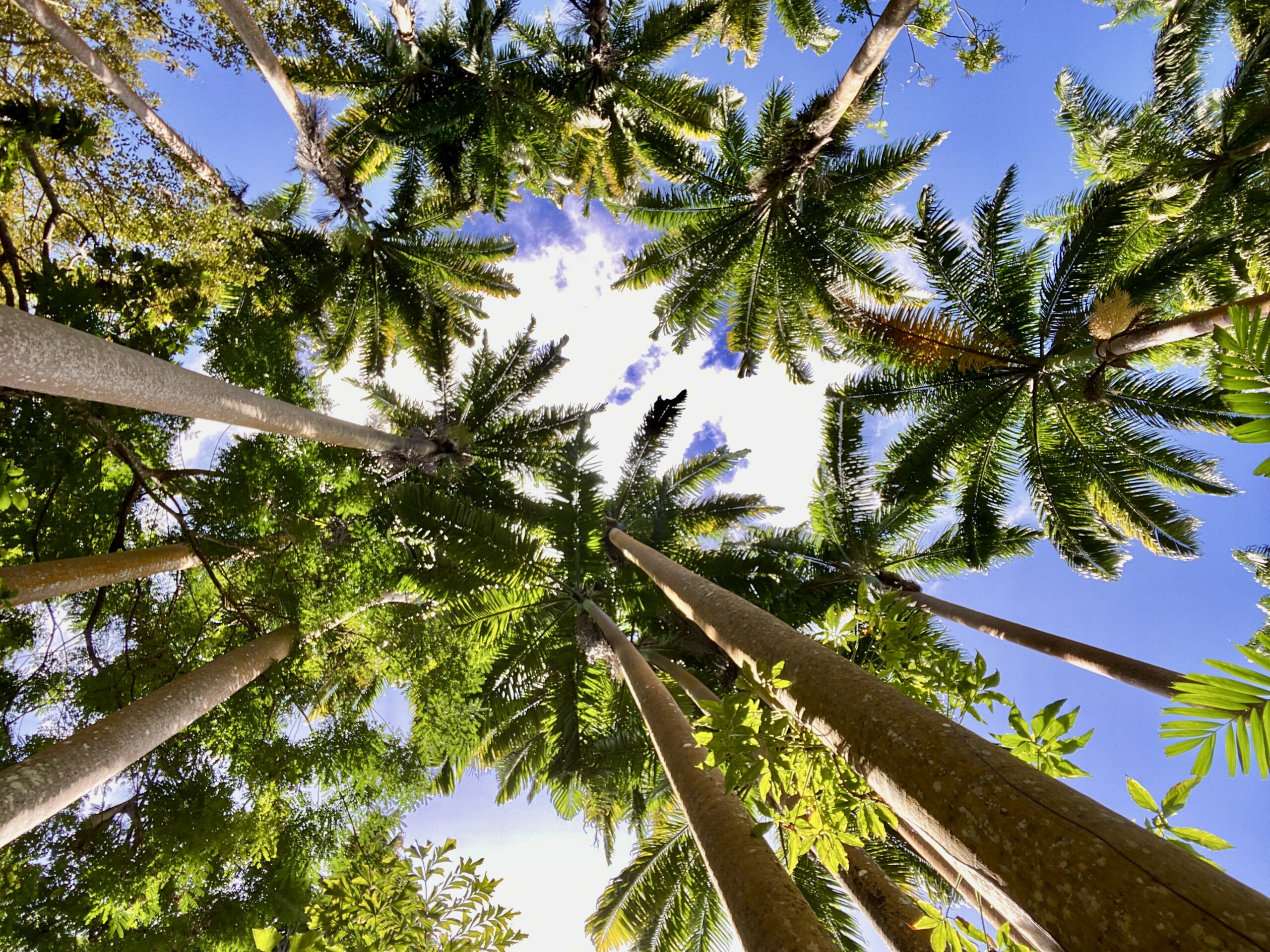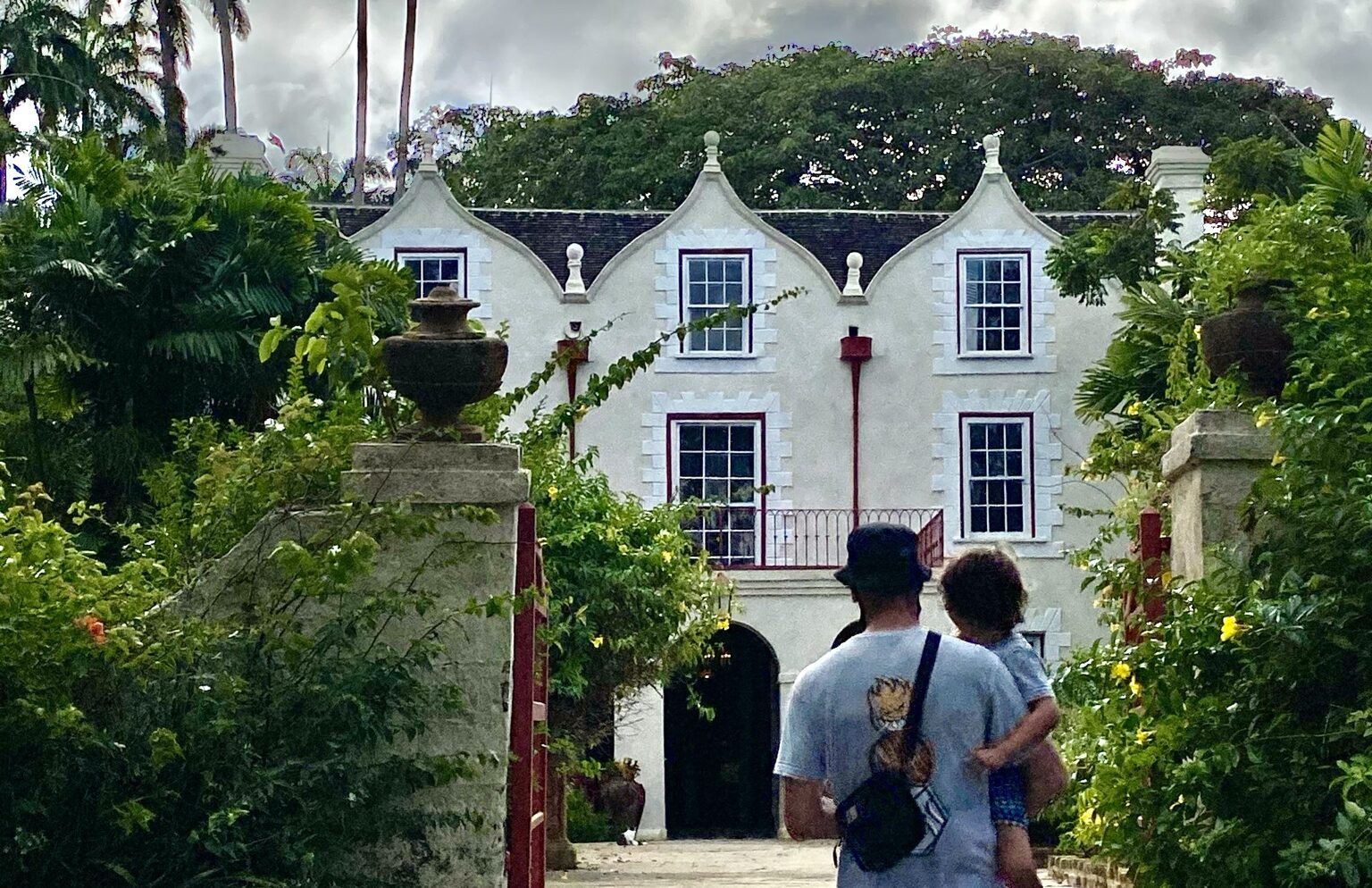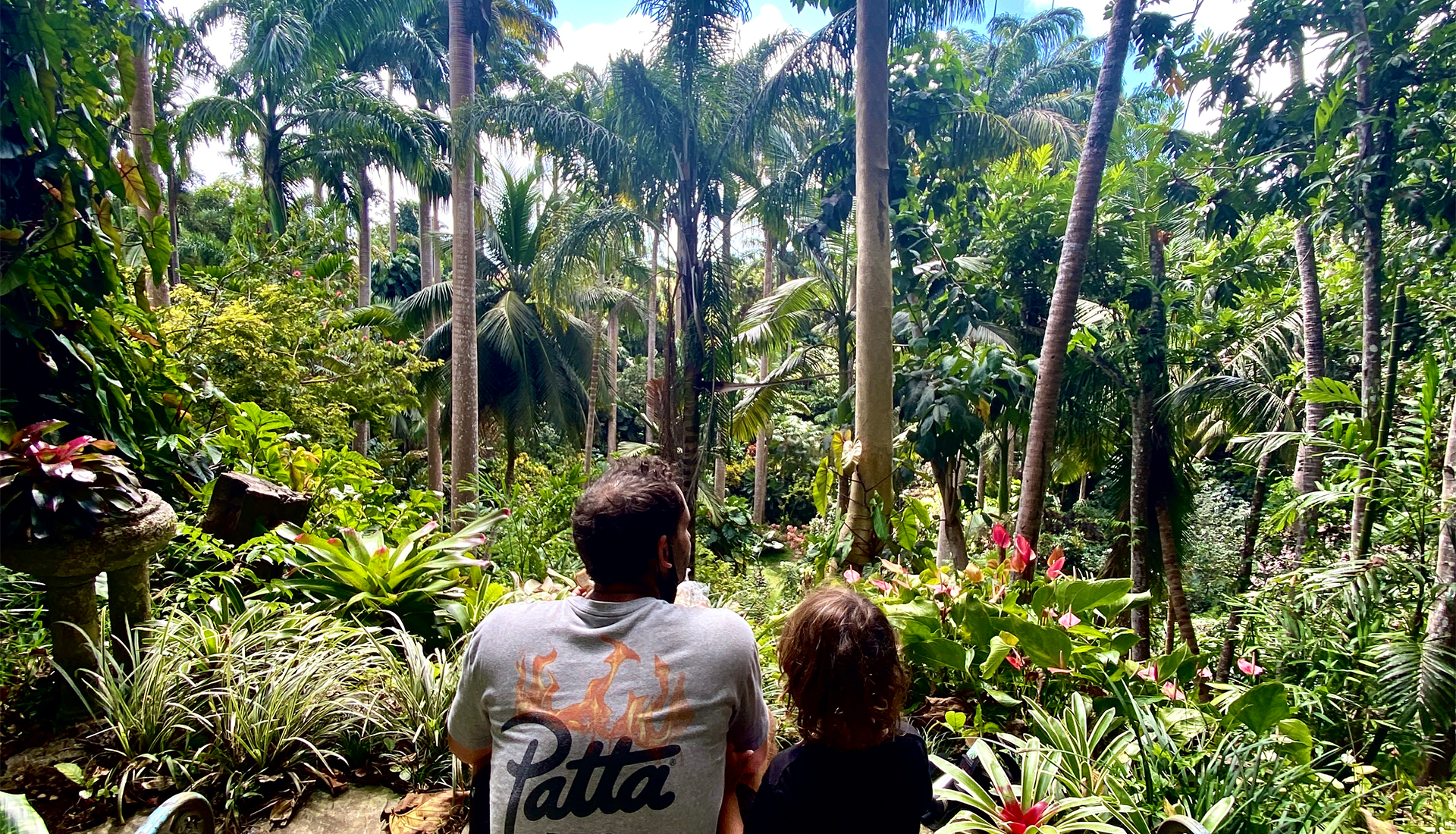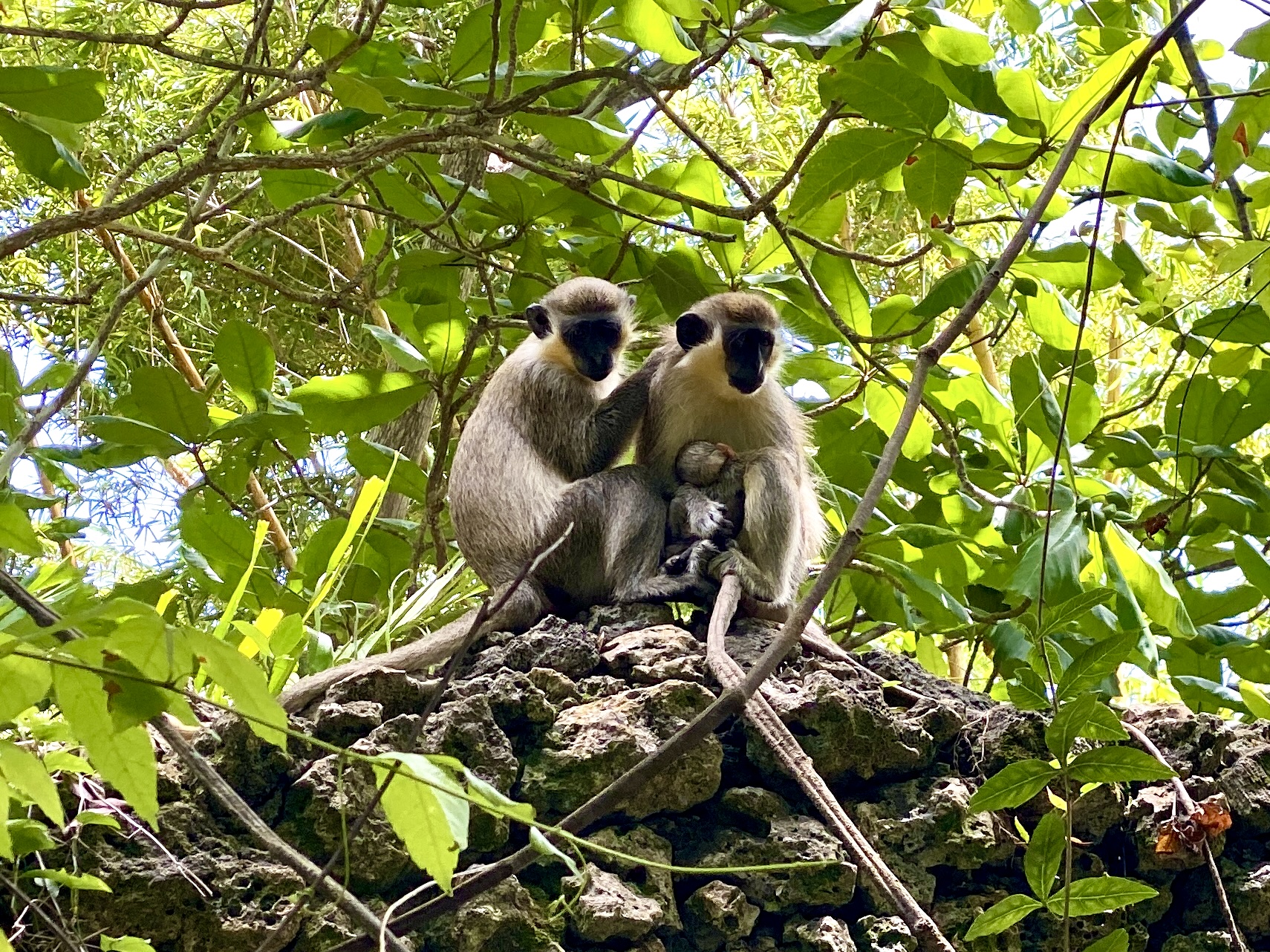
If you love to see animals roaming around in their natural habitat – this impressive mahogany woodland is the place to visit – as you can surround yourself in the abounding flora and fauna. This forested park provides much needed shade as you navigate the Reserve and as it is situated in an elevated part of the island you will benefit from the Atlantic breeze.
You “follow the yellow brick road” around the Emerald city (otherwise known as the luscious green park) precariously stepping forth so not to disturb any tortoise in your path. My son, in an attempt to befriend the sluggish reptiles, pulled some leaves from a nearby branch to feed them which they relished. We observed many chickens, ducks and geese roaming the Reserve which was reminiscent of the farmyards we have back in England. Some other non native animals you will find are rabbits hopping around and agouti – a cute rodent from Central and South American rainforests that resemble large guinea pigs.
There are swamps with subdued caiman basking in the sun, their dark coarse scaled heads and amber green beady eyes poking out from the murky water surface, which they happily share with some large bathing tortoise.
Bambi and his fellow siblings (the brocket deer) hide behind trees apprehensive of our close proximity but like all the other animals in the park they are unfazed by visitors passing through their home. We can hear a rustling behind us, followed by a screeching and honking and cautiously turnaround to notice that we are surrounded by an ostentation of peacocks – a sea of iridescent blues, metallic greens and bronzes. With the realisation that we have been outnumbered by these majestic birds that are rapidly closing in on us, we promptly decide to head to the reptile enclosure.
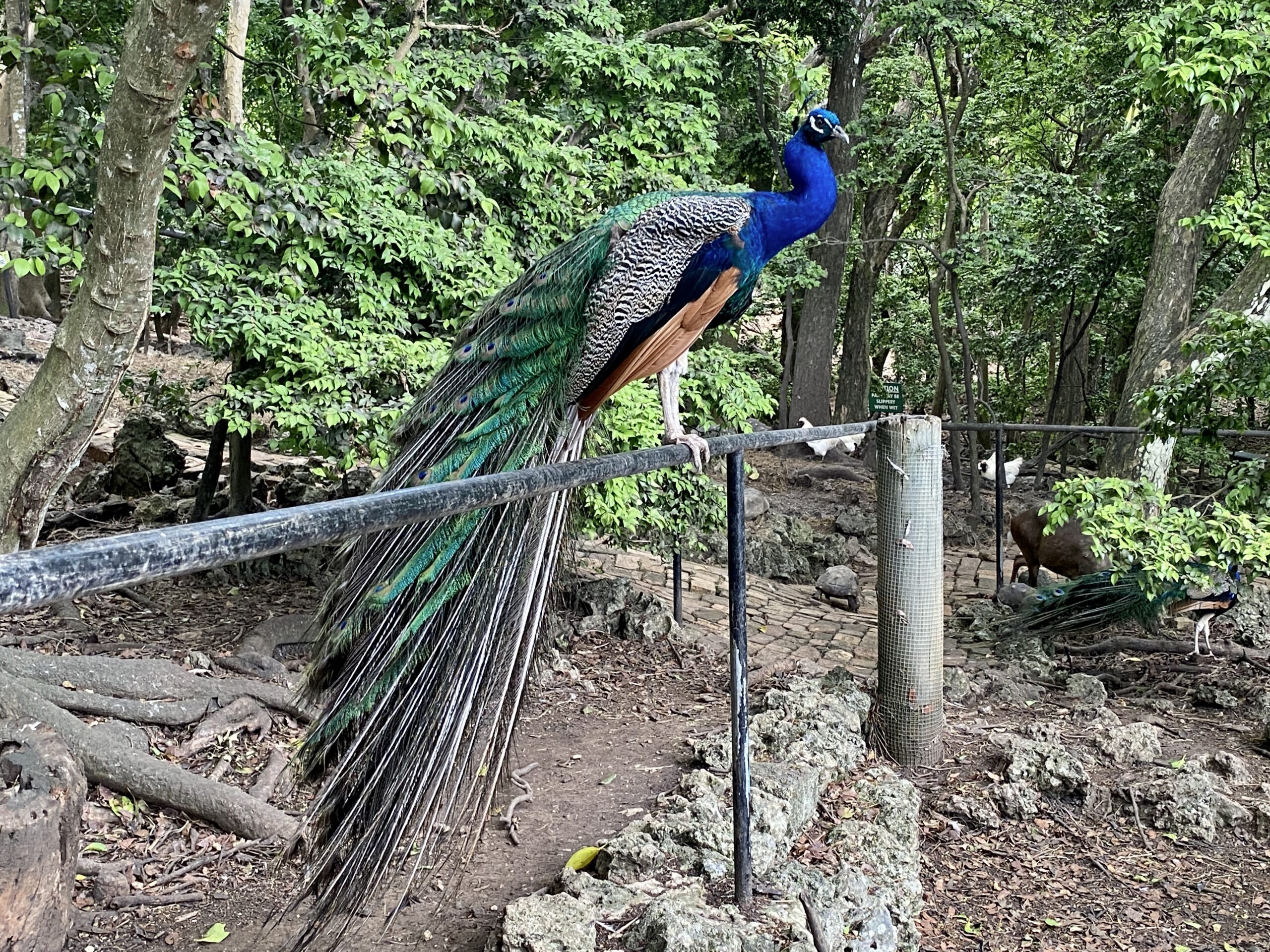
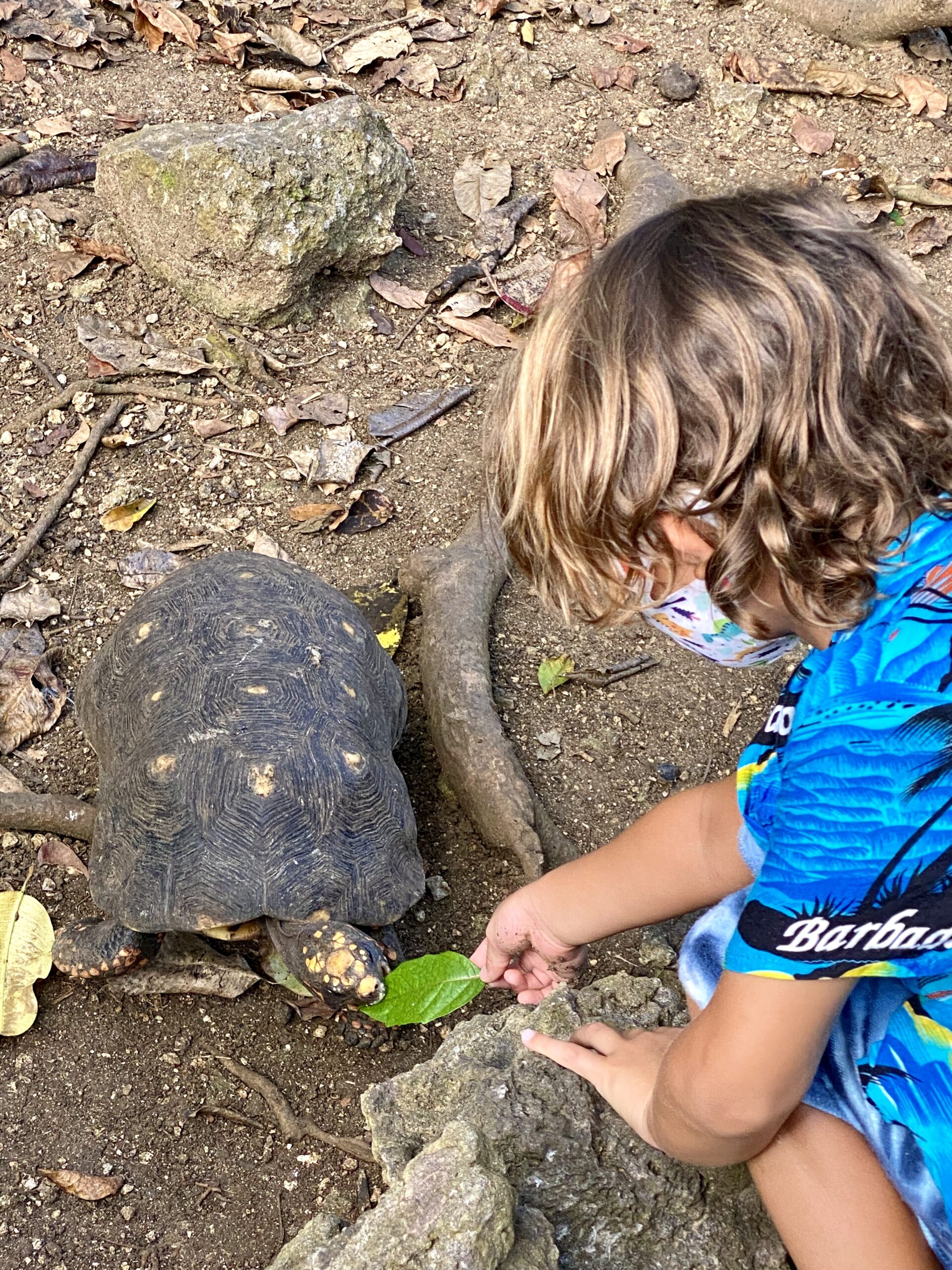
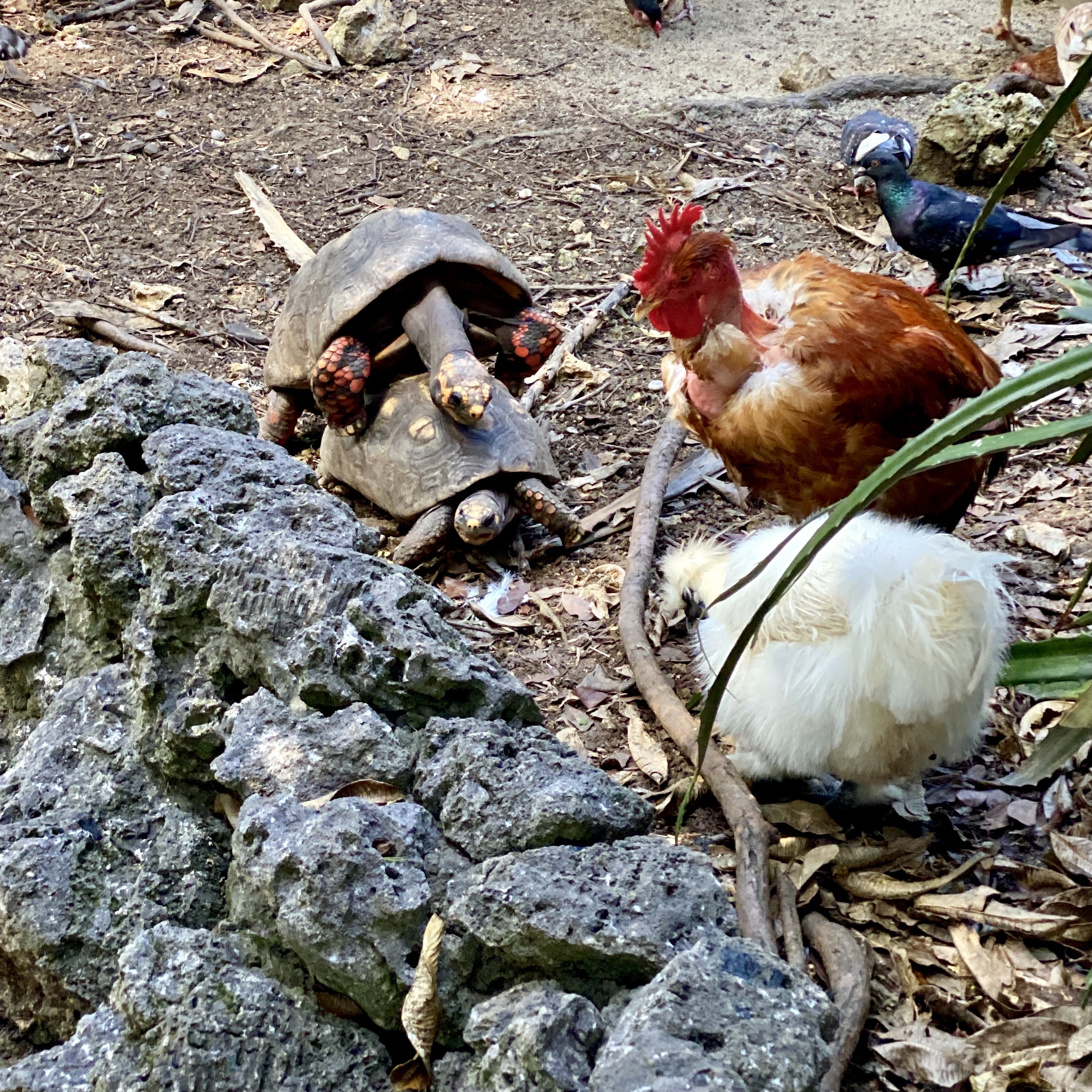


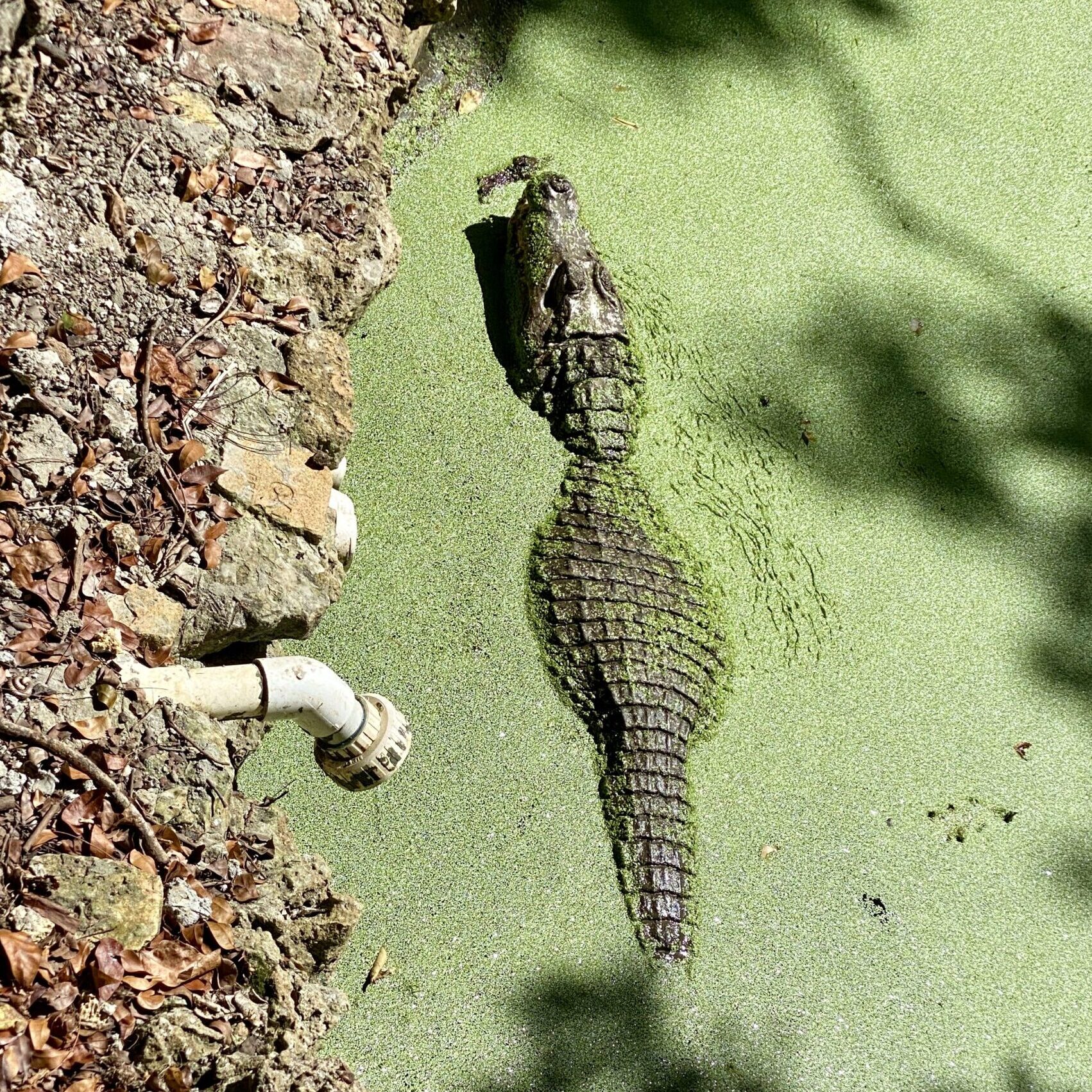
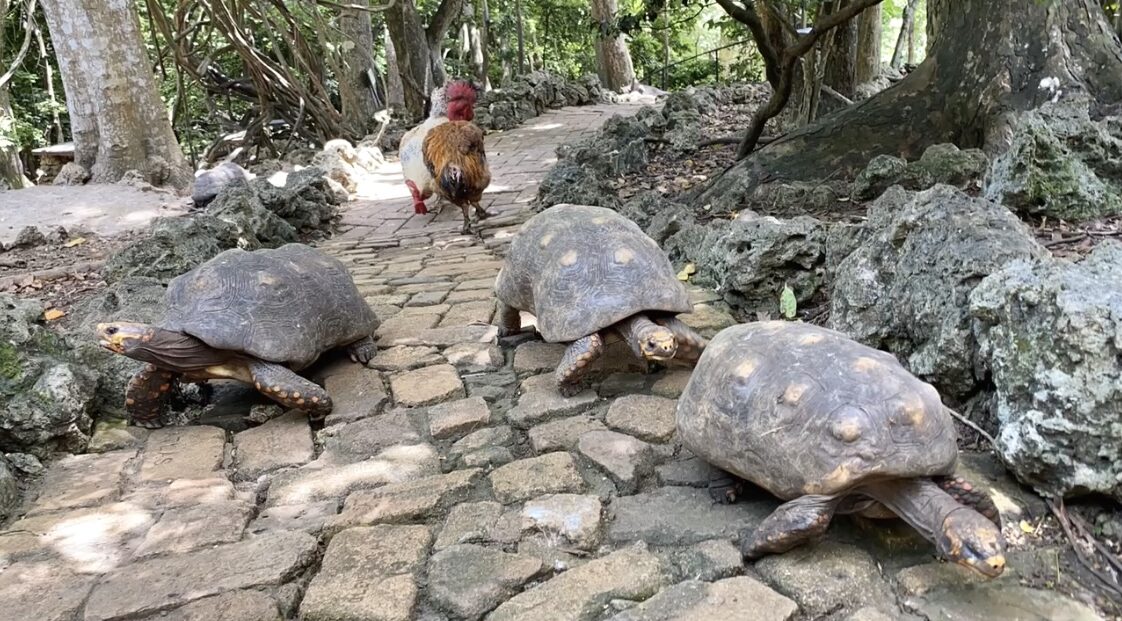
There are glass tanks with snakes cunningly camouflaged hiding beneath banana leaves, baby tortoise hurdled together in their enclosure, terrapins gliding through the water – all to the sound of David Attenborough, as his documentaries are playing on the screen in the background.
As we step back outside and head to the walk-through aviary we see many large somnolent iguanas in our path, their protruding spines, saggy-skinned throats and languid movements make me shudder. I pull Arlo away nervously as I see him trying to engage them with food. They seem completely oblivious and disinterested in our presence so I am reassured that they are safe to be around, but I wouldn’t advise getting too close as those serrated teeth could do some damage!
The large aviary features a variety of colourful birds such as parrots, macaws and love birds. I can’t help but feel a little sad when I see birds in captivity. The birds here however, have fellow companions for social interaction and their feathers are pristine – suggesting they are somewhat content.
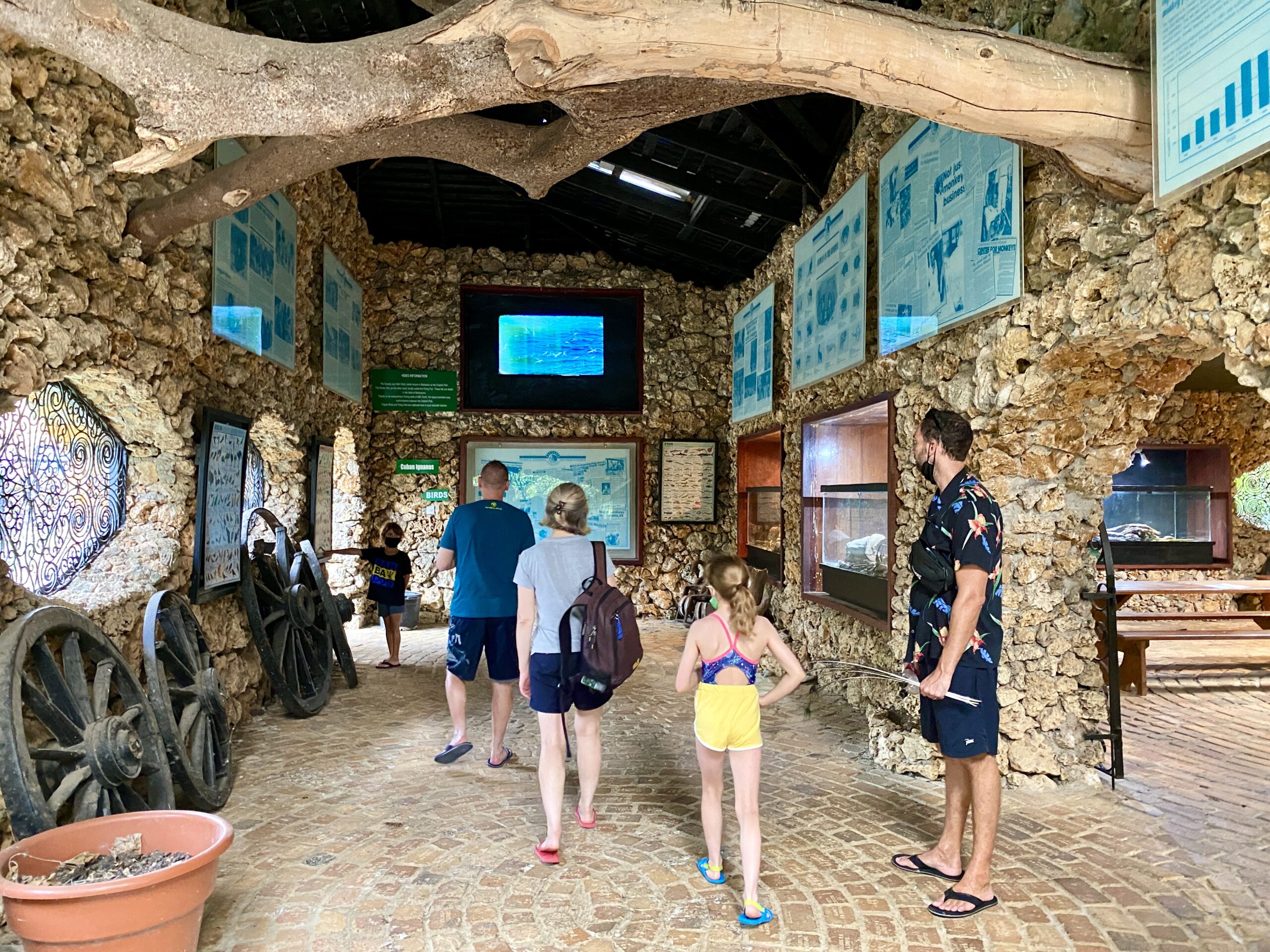
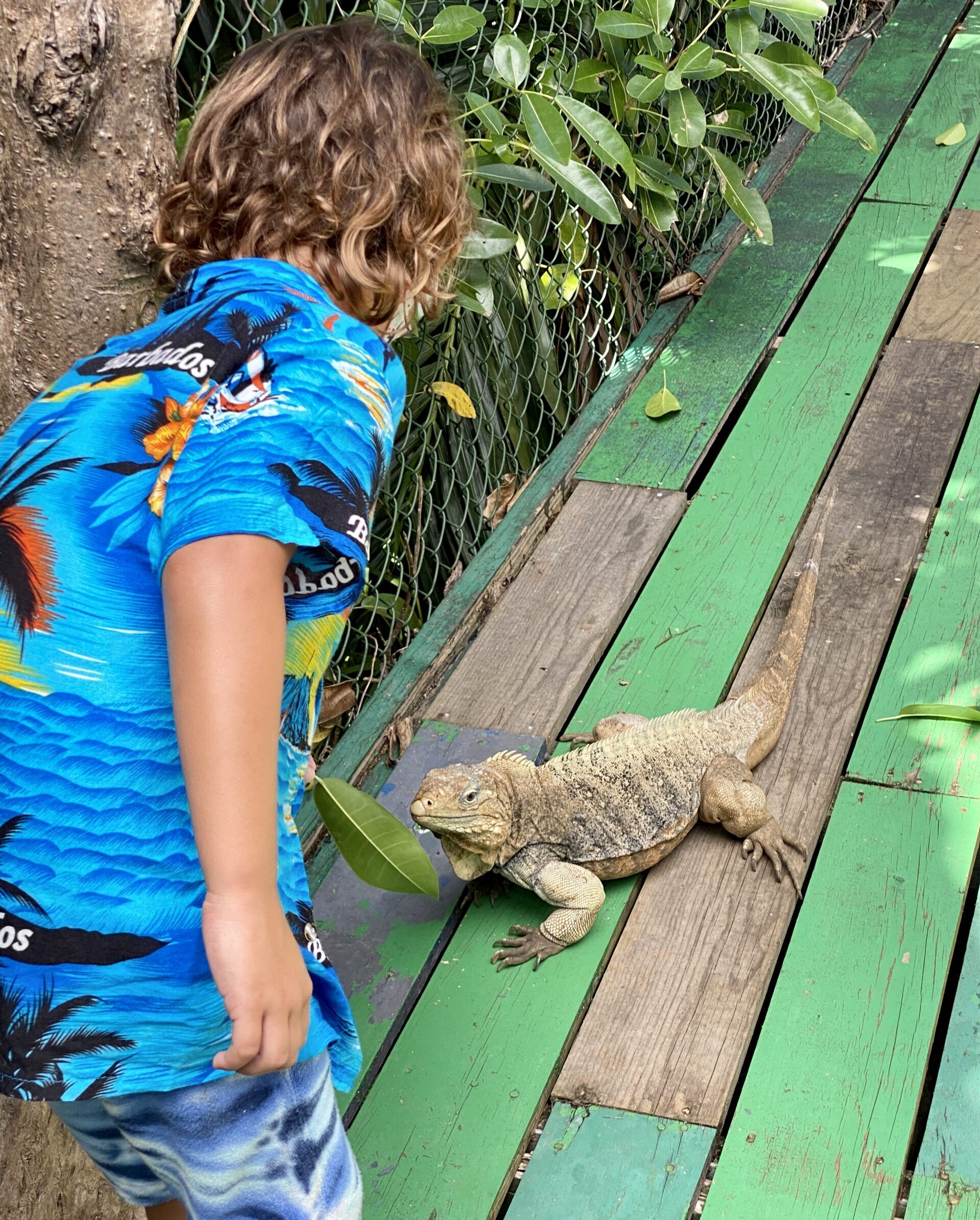
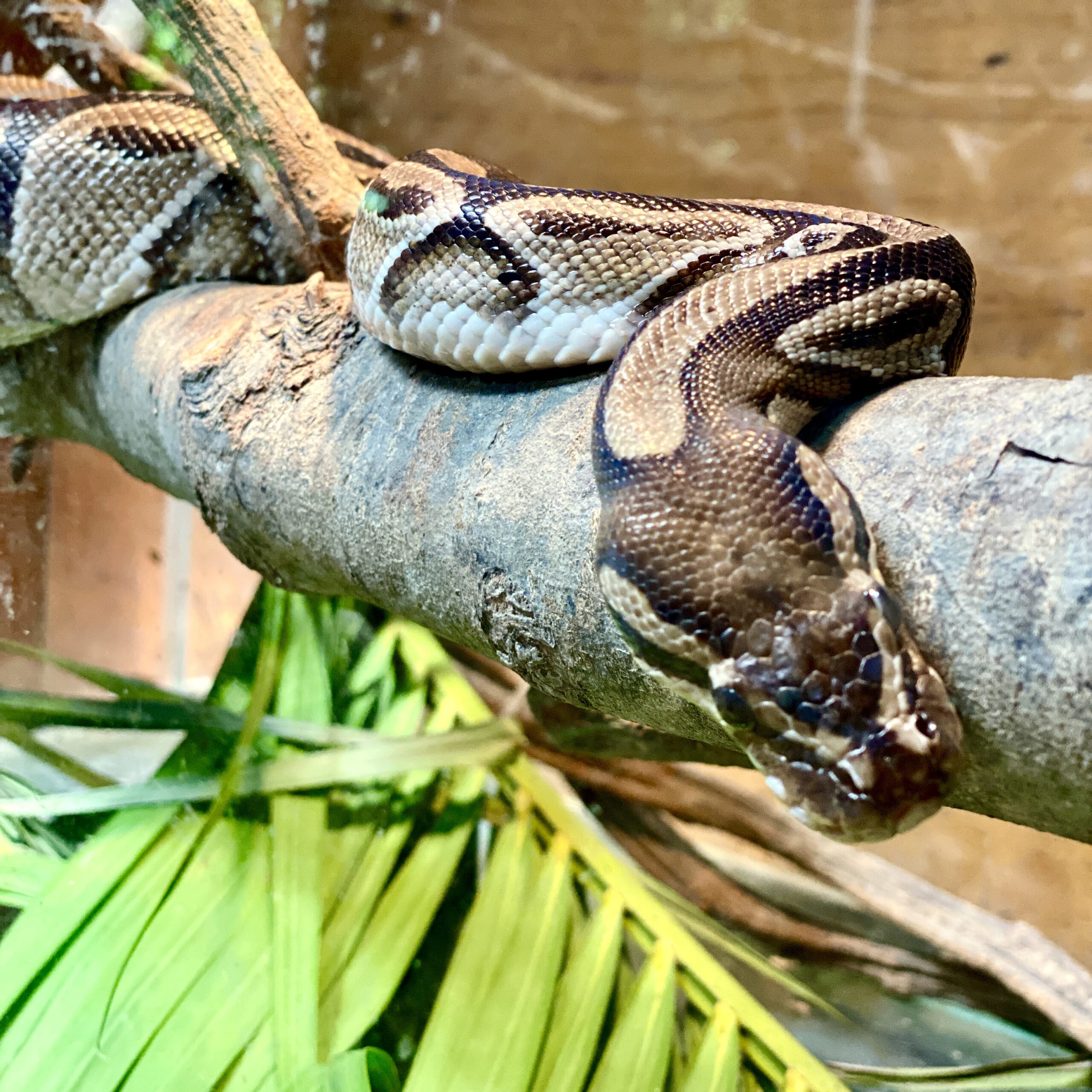
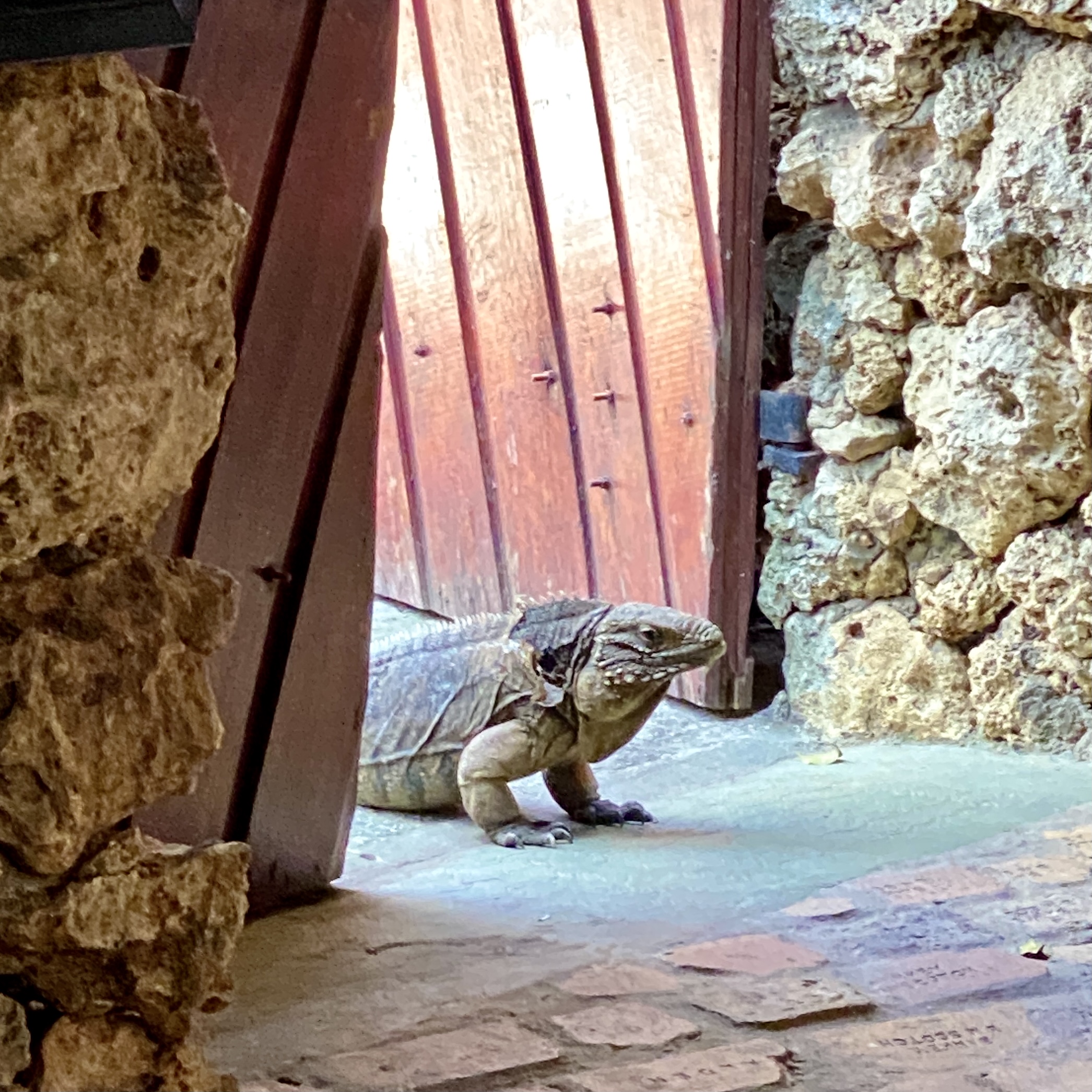
The other section of the Reserve located across the car park has numerous green monkeys inhabiting the forest. We enjoyed watching them brawling, embracing and swinging fastidiously through the trees. They are identifiable from their hairless dark blue faces, thick brownish-grey fur with specks of yellow and olive green giving them their name of the “Green Monkey”. The monkeys are fed at around 11am and 2pm each day so it is worth timing your visit accordingly as you will see dozens of monkeys gather to feast upon the tropical fruit platters that are placed before them by the Park Rangers. It is fascinating to witness the hierarchy within the troops, as the beta males (forever loyal followers) stand back to allow the alphas to devour the fruit before tucking in themselves. There were many tiny infants clinging to their mothers for nourishment; unsure of the pecking order and the hectic scurrying scene that was unfolding before them.
The monkeys seemed blissfully unaware of our existence apart from the infants that swung to a distant safety whilst keeping their eyes fixed upon us. Arlo had a wonderful intimate moment with an infant monkey passing a long hanging tree reed repetitiously back and forth. As the monkey became more confident with each exchange, I grew a little apprehensive as he was beginning to encroach on Arlo’s personal space so we decided to move on just incase it turned nasty. It is worth noting that they can become aggressive. The Park Ranger with pockets stuffed with monkey nuts handed us these favoured snacks to hold out for the monkeys, who boldly approached us gently taking them from our palms. It was an incredible experience to be interacting with them in the forest.
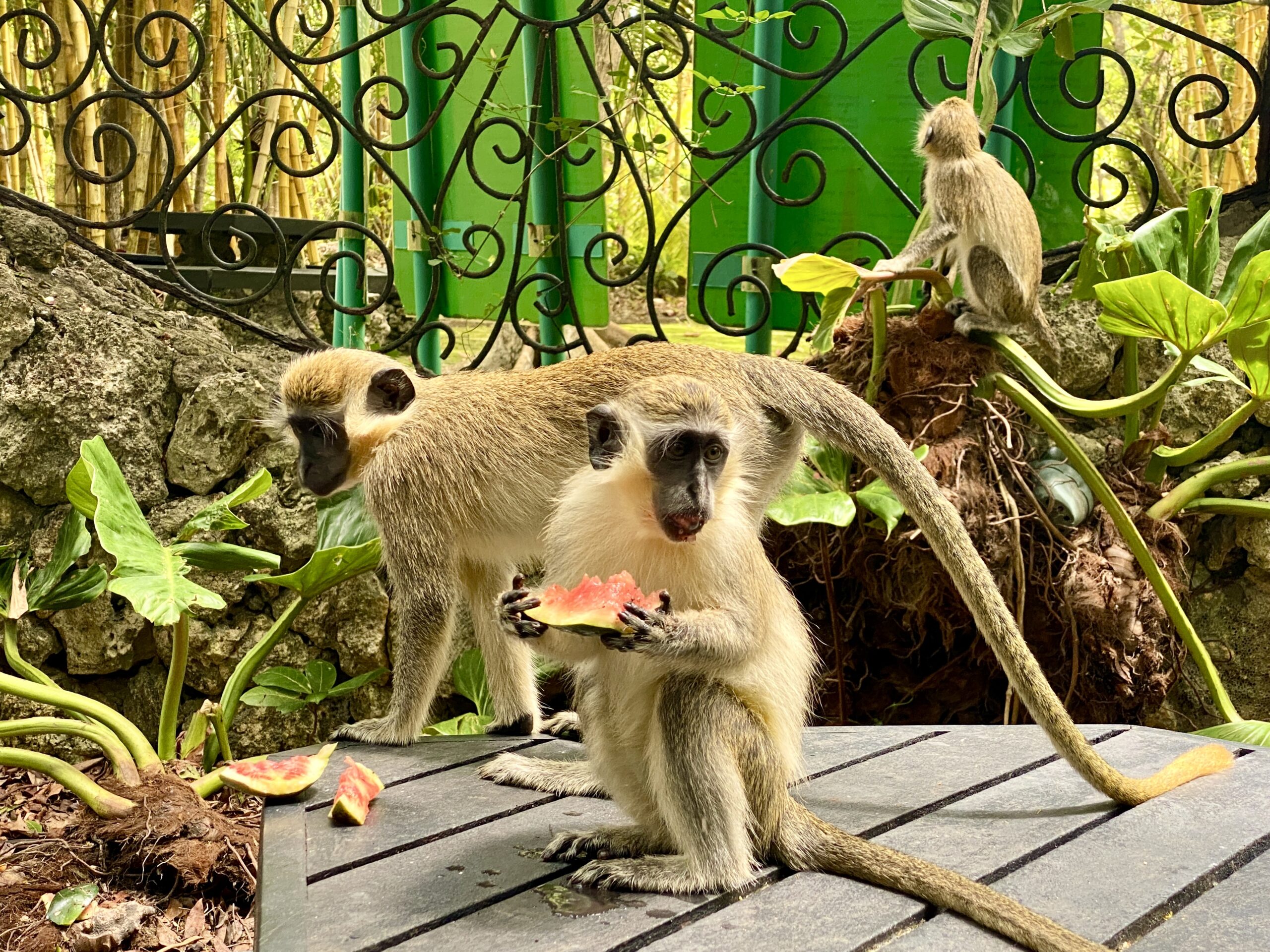
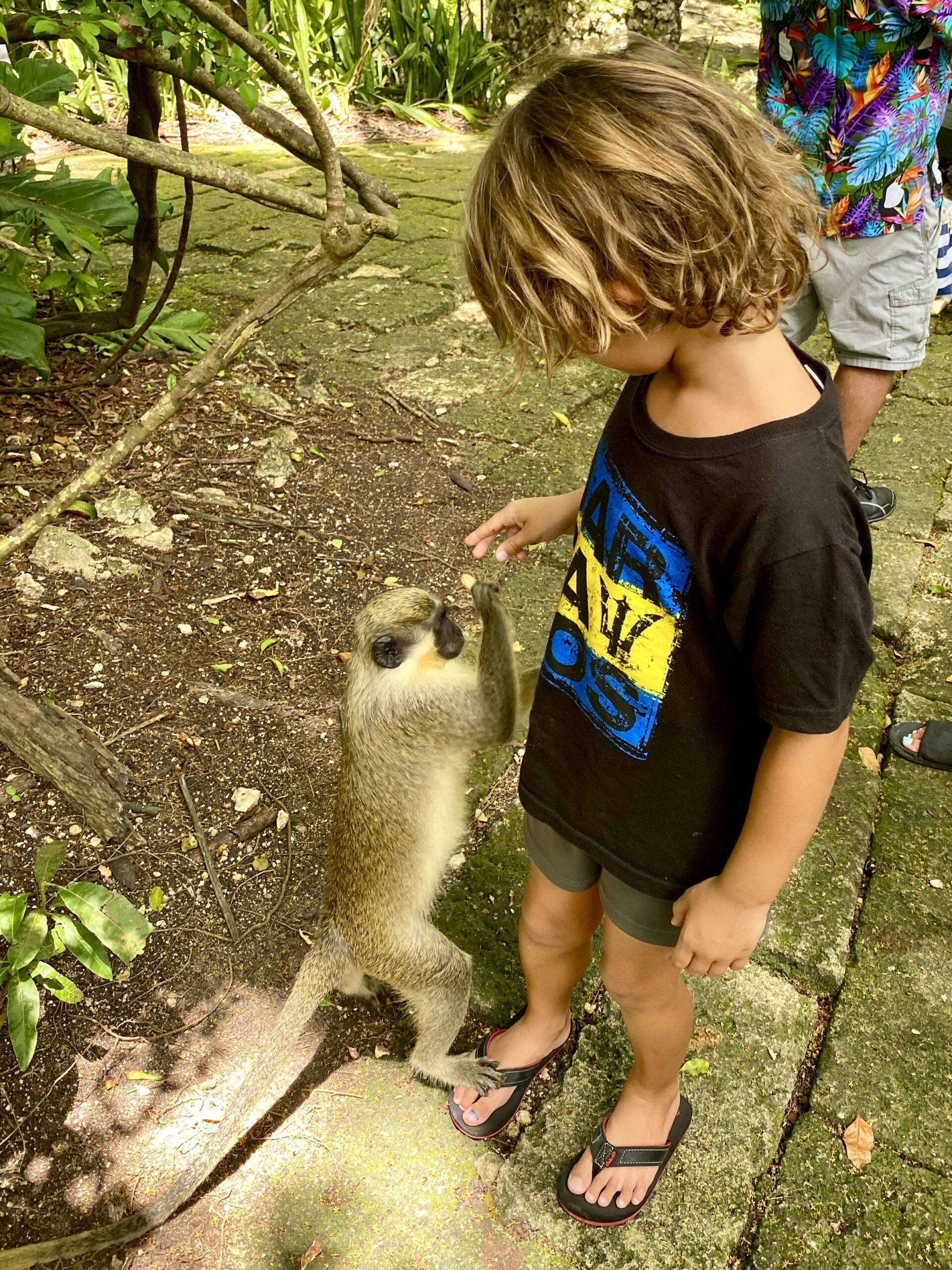
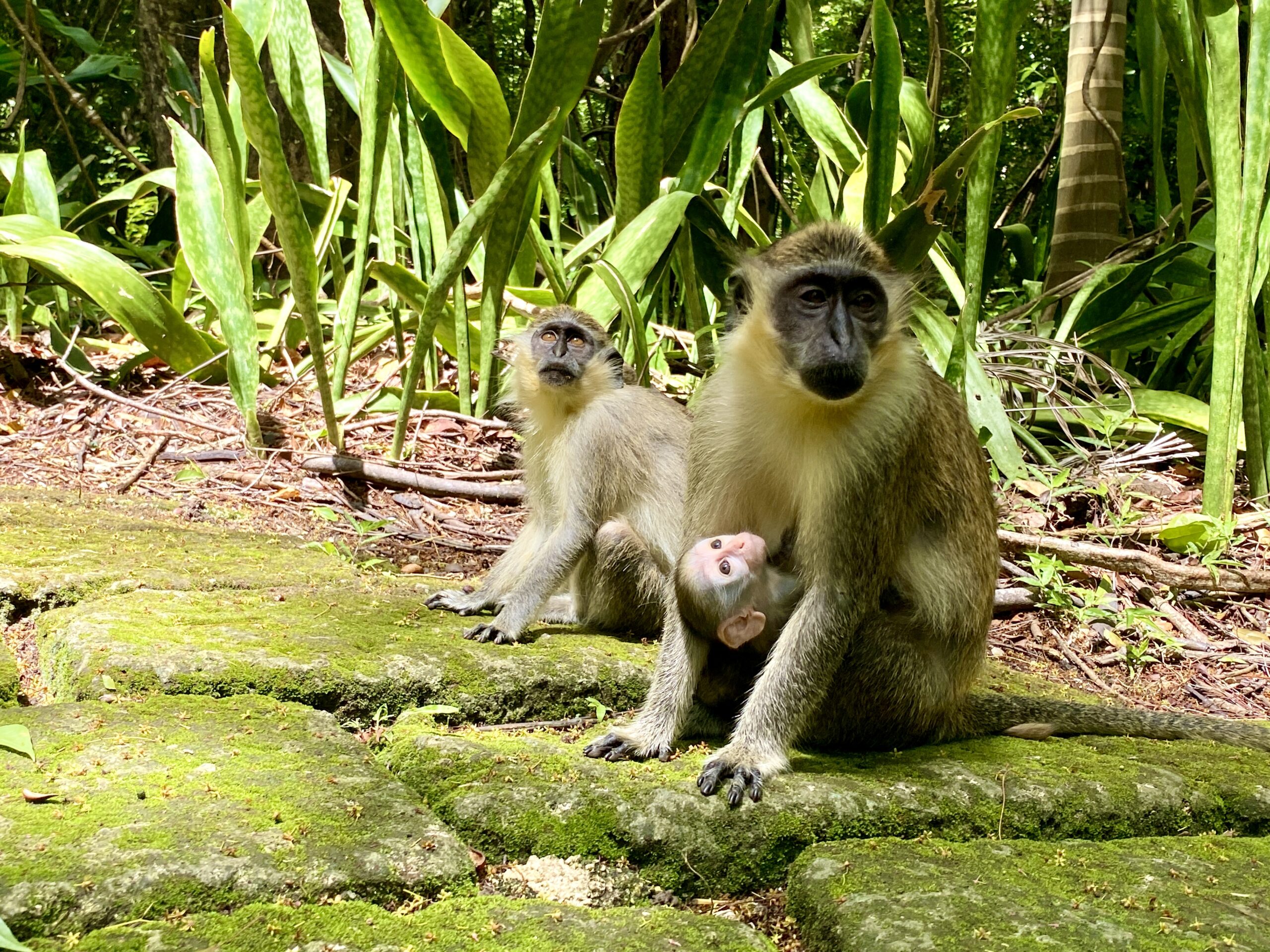
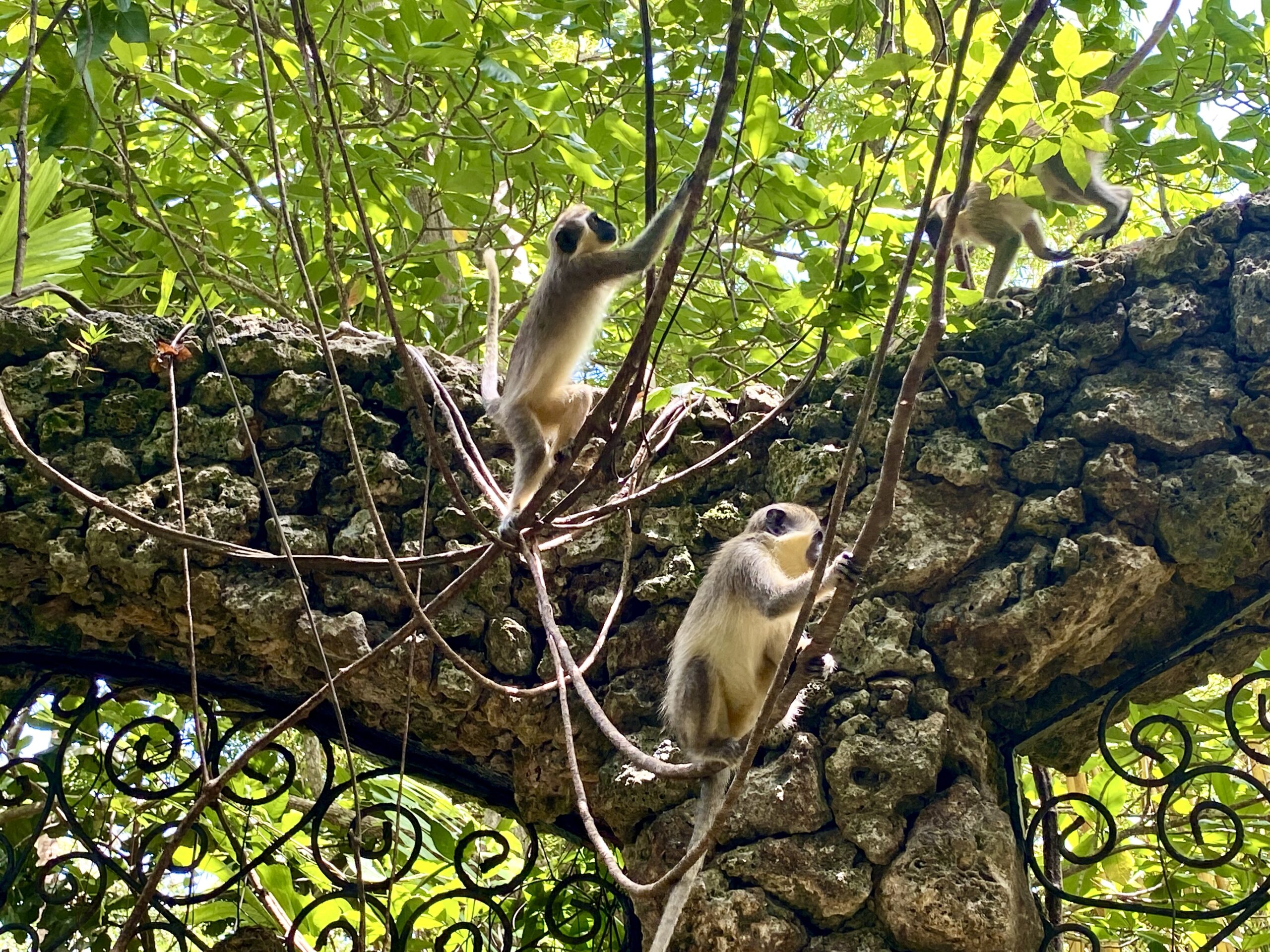
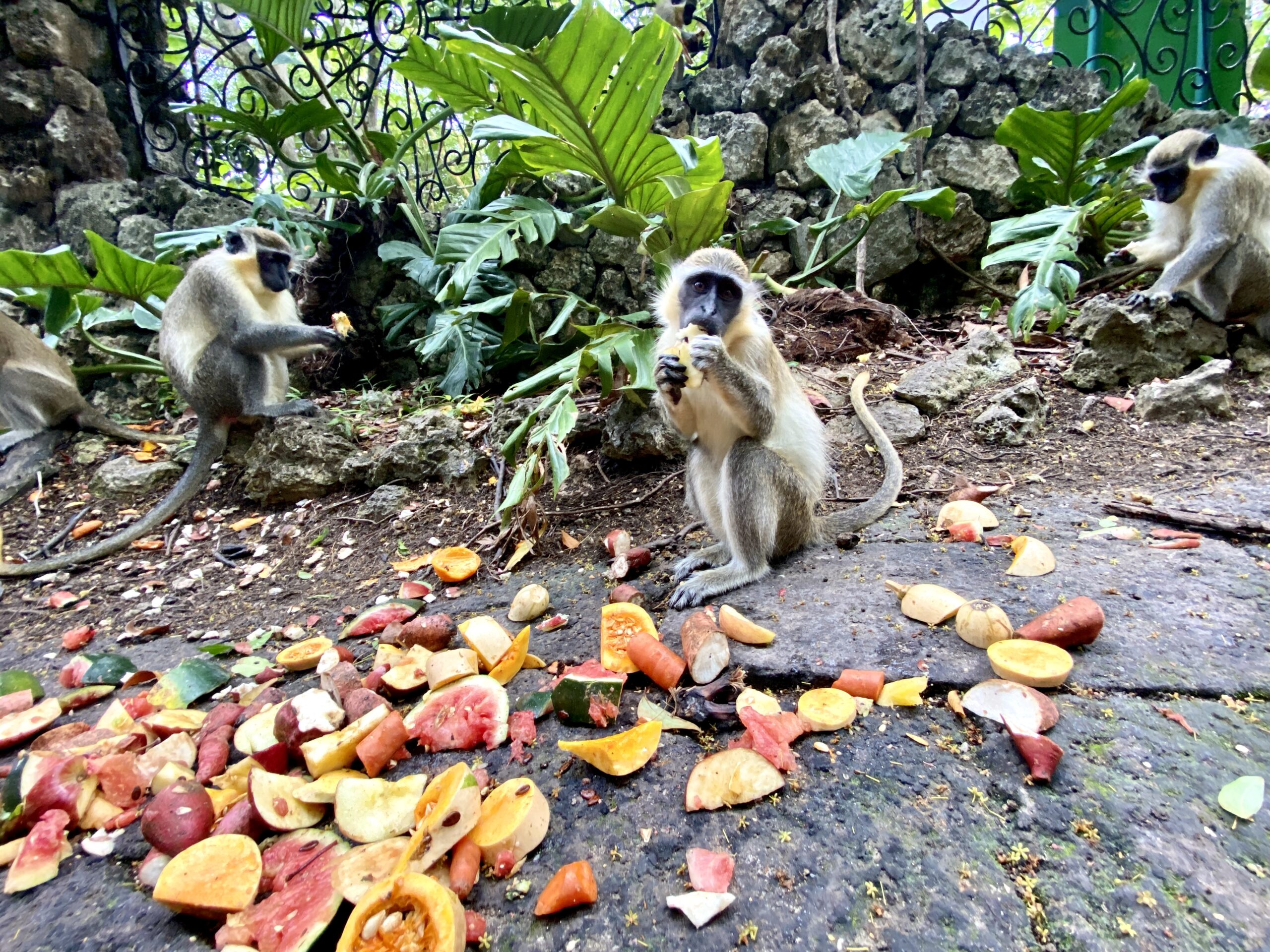
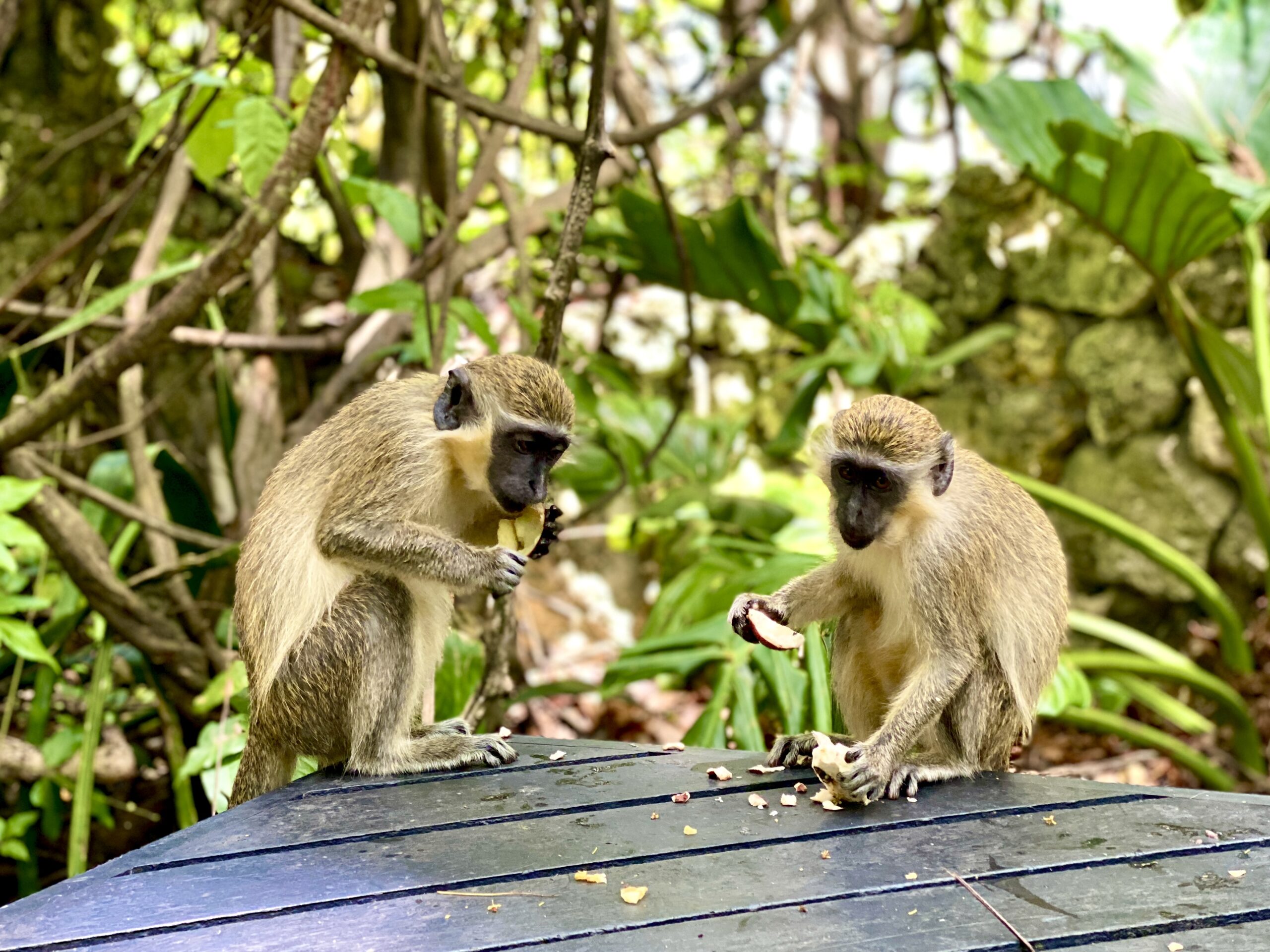
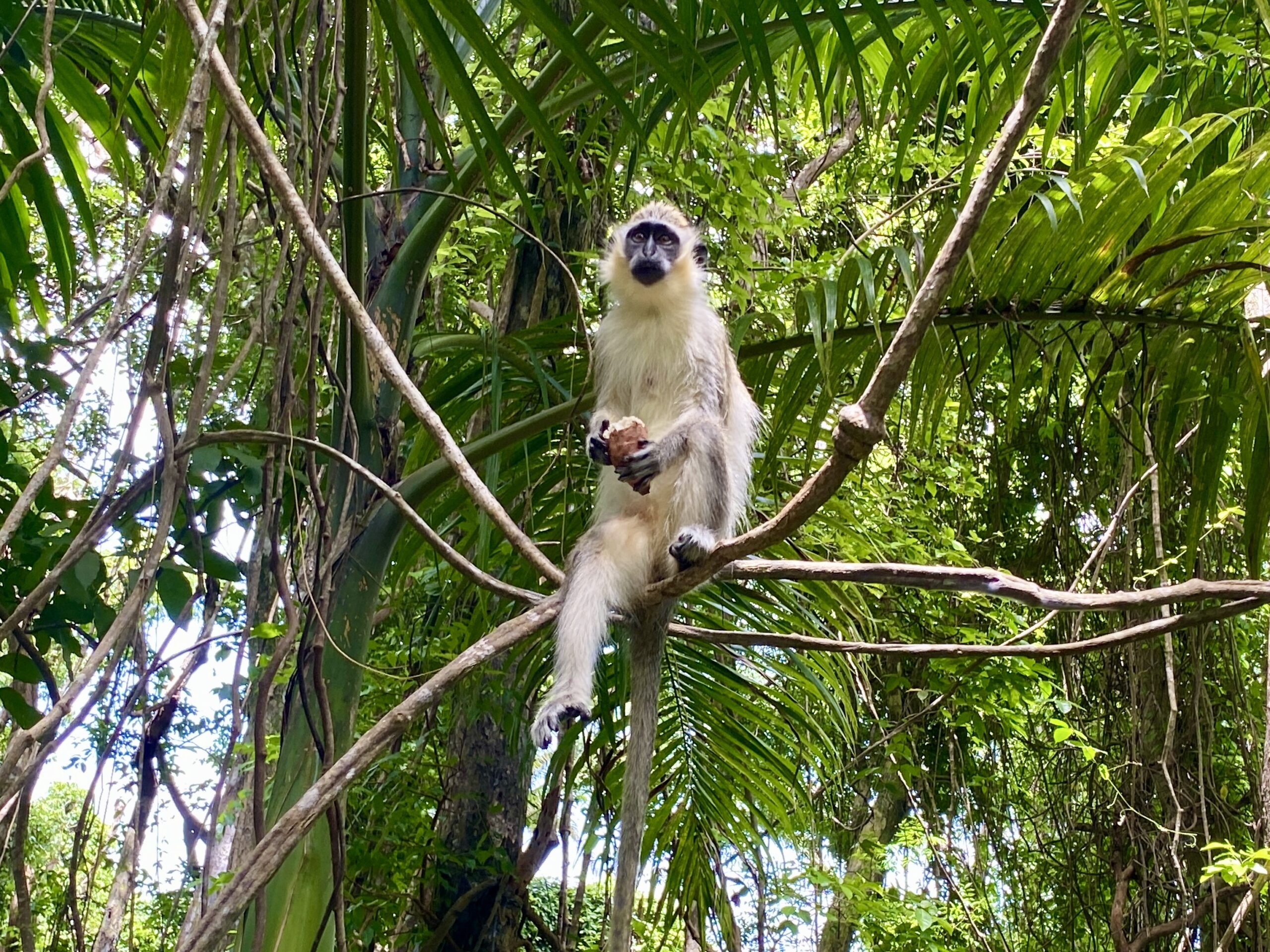
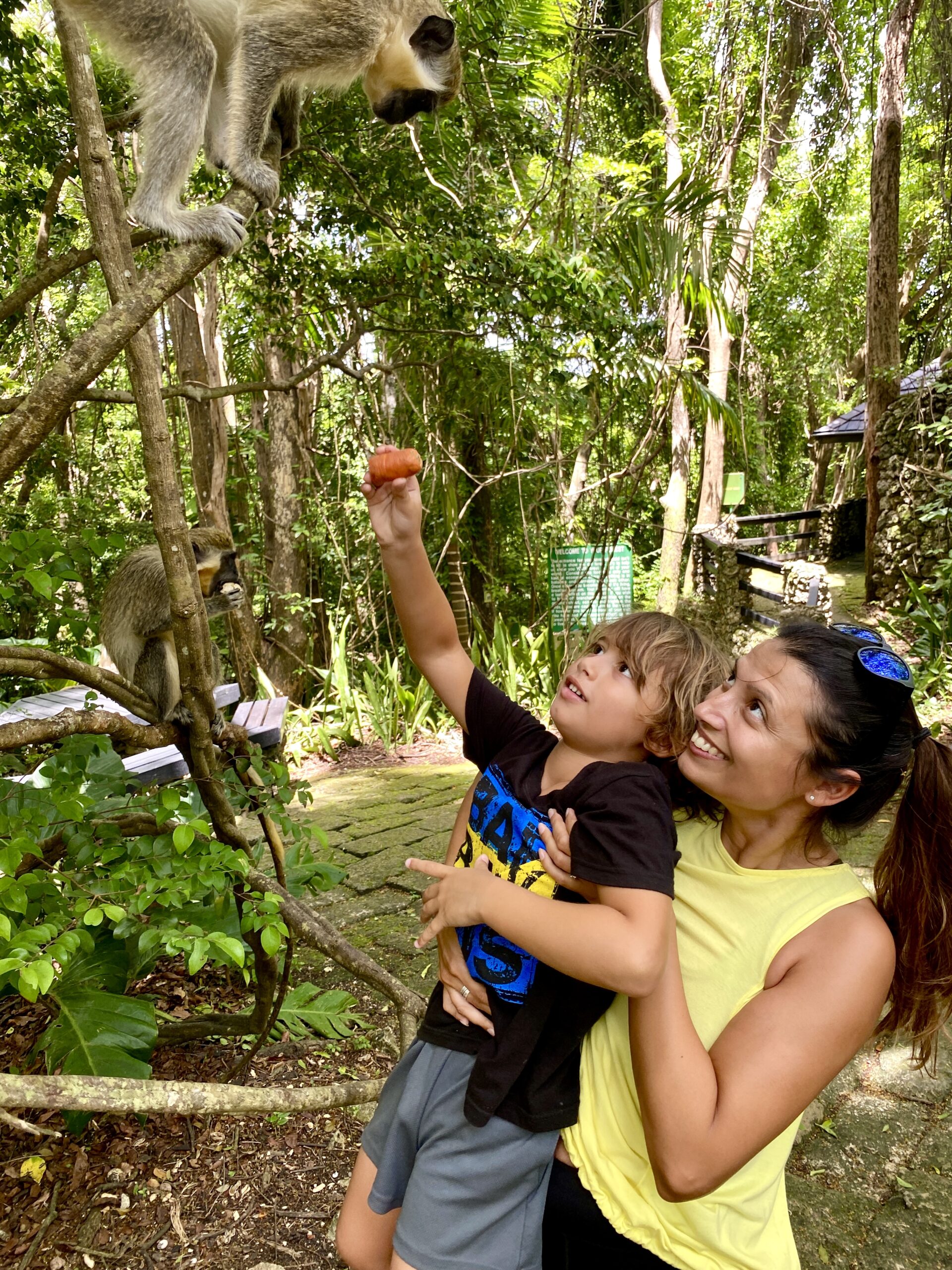
Your entrance fee to the Barbados Wildlife Reserve also gains you admission to the adjoining Grenade Hall Forest and Signal Station so be sure to head over there once you’ve completed your tour of the Reserve. You can trek a few minutes (approx 200 metres) through the forest to a disused telecom tower to climb the spiralling staircase which provides magnificent views of the island. There is a small fairly basic museum where you can view the items found during the excavation and listen to a recording of the history of the telecom towers which are dotted around the island.
If you continue your trek through the forest you will arrive at a cave where you will see many sleeping bats and some enormous moths that you may mistaken for these furry winged friends! Barbados boasts eight species of bats, they play an integral role in maintaining nature’s balance by consuming thousands of insects such as mosquitoes, moths, beetles, ants and flies. They assist in pollinating plants and scattering seeds which helps to keep ecosystems healthy and stable. Their nitrogen-rich faeces helps plants and trees to grow, so we have a lot of appreciation for these flying vampish mammals.
We have visited the Wildlife Reserve on numerous occasions and it has always been a wonderful day out for all and a lovely change of scenery from our regular sandy beach trips. So please don’t miss out on this special experience to spend time among the island’s flora and fauna!
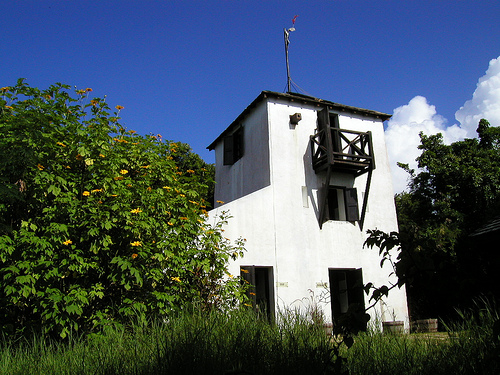
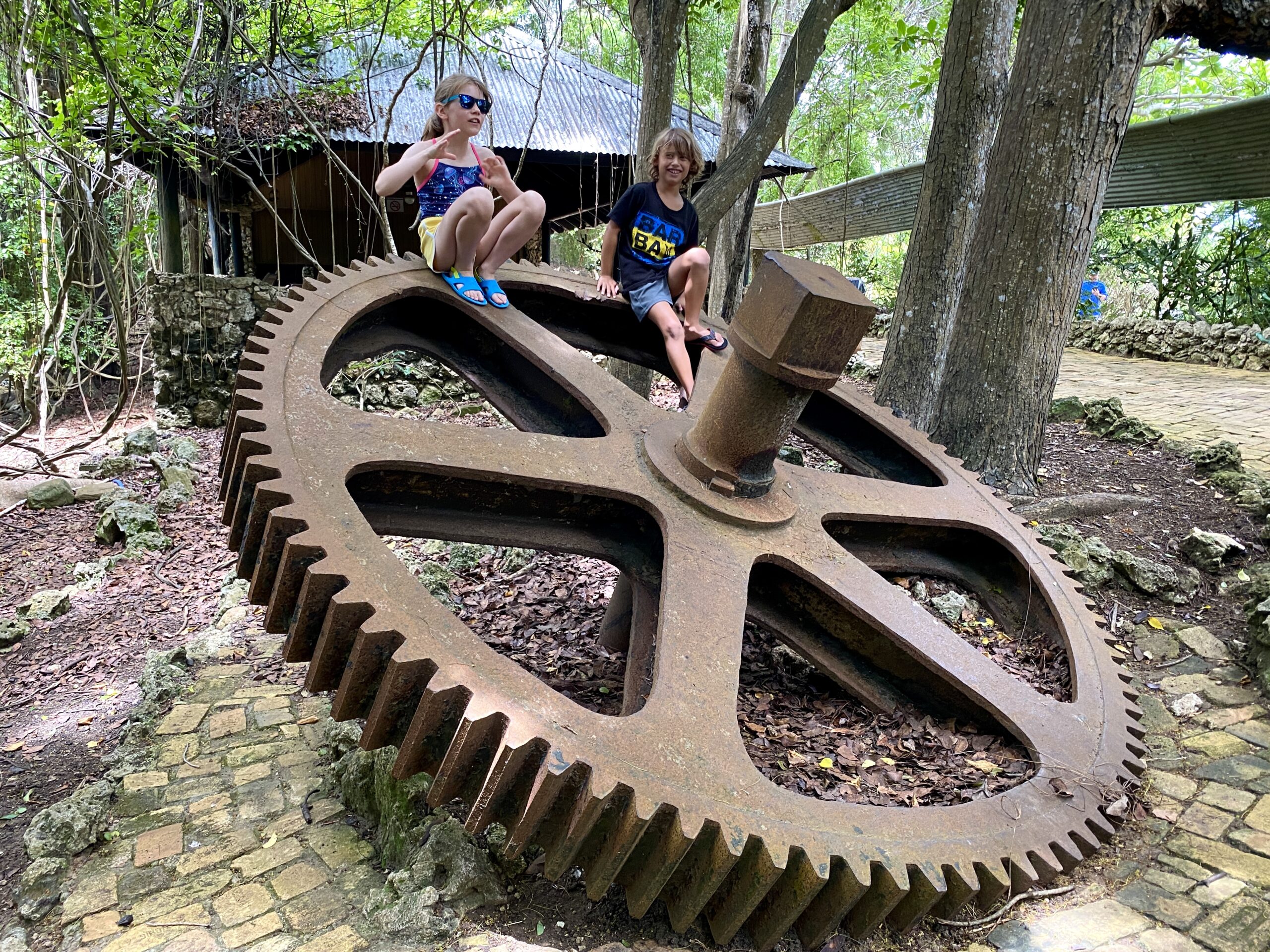
TIPS
- Time your visit for 11am or 2pm when monkeys will come out to feast.
- Bring some monkey nuts for close interaction with monkeys, it’s their favourite snack.
- Be mindful that green monkeys can be dangerous so keep a respectful distance, particularly if trying to engage infants, as their parents naturally may become anxious of your motives.
- The bar is fairly limited so it is worth bringing your own picnic. There are plenty of tables and benches for use.
- Remember to apply some repellant such as Deet as you will be in a densely forested area.
- Pop across the road to Farley National Park with beautiful grounds, a playground and stunning hill top views.
THE SPECIFICS
Opening Times: 10am – 5pm everyday to include weekends. (Last entrance at 4:00 pm).
Entrance Fee: Adults $15US / $30BDS. Children $7.50US / £15BDS. Please note that it is cash only, both BDS and USD are accepted here.
Snack Bar: There is a little Bar next to the ticket office with a small selection of refreshments such as drinks and crisps. You can bring your own picnic as there are table and benches provided.
Toilets: There are some clean washroom facilities available near to the bar area.
Parking: Ample free parking in the large car park area that sits between the two park areas.
Location: Barbados Wildlife Reserve, Benny Hall, St Peter, Barbados.

RELATED GUIDES
Checkout our latest posts for the Islands most definitive guides…
If there are any other tourist attractions that we have not featured but you’d love to read about, please get in touch and send us a message here.









